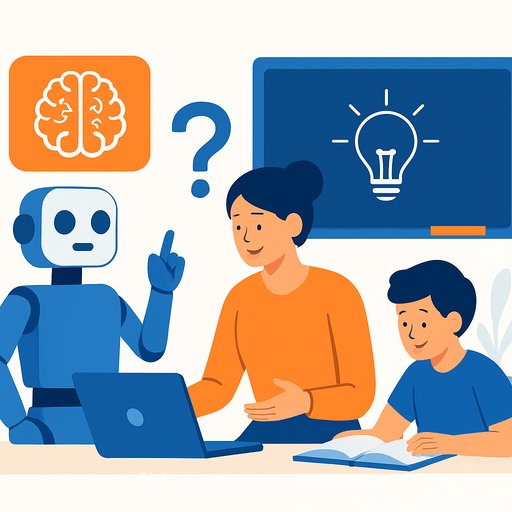AI and learning: A new chapter for students and educators
Technology has always reset how we teach and learn. AI is the next reset. Access has improved worldwide, yet many classrooms still lack resources and time. With teacher demand rising and attention scarce, we need tools that create better learning, not shortcuts.
The goal is simple: help learners think, apply, and stay curious. AI should support the craft of teaching, not replace it. The internet made information abundant. AI can make it usable for each learner's pace, style, and interests.
What educators need from AI
- Prompts that guide thinking, not give away answers.
- Support that builds skills over time, not one-off fixes.
- Flexible experiences that meet different learners where they are.
- Tools that save time on planning and admin so teachers can focus on people.
Tools in action
- Gemini Guided Learning helps students work through problems step by step, revealing the "why" behind an answer instead of handing it over.
- YouTube and Search are becoming more conversational, so learners can ask follow-ups, probe examples, and clarify gaps as they go.
- NotebookLM turns your source materials into study help-quizzes, flashcards, and even immersive audio or video summaries-so students learn from the content they actually use.
- In Google Classroom, no-cost AI features can assist with lesson planning, rubric creation, differentiation ideas, and routine admin tasks.
Practical classroom plays
- Pre-teach complex units with a short, guided Q&A sequence that surfaces prior knowledge and misconceptions.
- Generate low-stakes formative checks (exit tickets, quick quizzes) from your own lesson notes or readings.
- Create student-facing study guides, flashcards, and practice problems that adapt in difficulty.
- Offer multiple explanation styles (plain language, visual, analogy) to fit different learning preferences.
- Streamline repetitive tasks: draft lesson outlines, differentiate a reading, or convert a rubric to student-friendly checklists.
- Draft parent updates and progress notes faster, then refine with your voice.
Academic integrity, safety, and equity
AI brings real questions: cheating, accuracy, bias, and access. The best path is clear norms plus assessment design that rewards thinking, process, and original work.
- Redesign evaluation where it makes sense: in-class debates, portfolio projects, oral examinations, and process logs.
- Teach AI literacy: when to use it, how to verify, how to cite, and how to reflect on the help received.
- Be explicit about allowed uses (brainstorming, drafting, practice) and prohibited ones (submitting AI work as original).
- Plan for access: provide school-approved tools and support so all students can participate.
- Build safety into workflows: check sources, cross-verify claims, and model fact-checking in class.
Implementation checklist
- Write a short AI use policy for staff and students with examples of green-, yellow-, and red-light use cases.
- Start small: pilot AI support in one unit or course, then expand based on evidence.
- Select tools with clear data protections and admin controls.
- Run quick PD: prompt-writing basics, bias checks, and classroom scenarios.
- Measure impact: track time saved, student engagement, and assessment quality.
- Keep a feedback loop with students, families, and teachers to improve practice.
The bottom line
AI should help learners think deeper and teachers teach with less friction. Keep the human elements front and center-curiosity, feedback, and connection. Use AI to make those elements happen more often.
Build your team's AI fluency
If you're mapping skill paths for teachers or program leads, explore curated options by role at Complete AI Training - courses by job. Start with one capability, measure impact, and iterate.
Your membership also unlocks:






